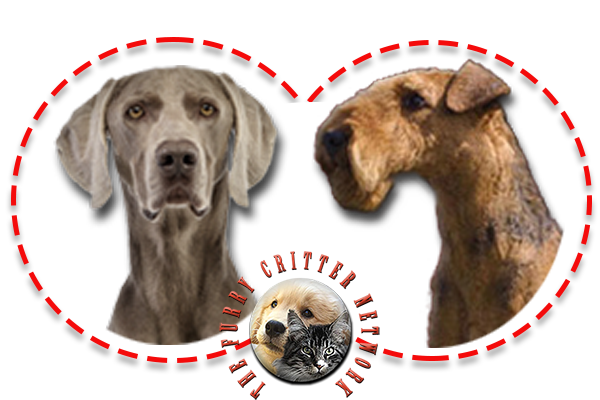Behavior
This rustic breed is strong, energetic, and full of life. Possessing legendary courage, the speedy Airedale Terrier is always on the alert. He forms a close bond with his owner and is gentle with children. The breed can be dominant, even aggressive with other dogs. The Airedale Terrier has many skills. He is a strong swimmer and is used to hunt ducks and otters as well as boar and deer. He will also valiantly protect his owner and his property. As a working dog, this breed serves in the army and works with police as well as search and rescue teams.
If the Airedale Terrier is to be kept as a house dog, he must have long walks every day. Brushing two times per week is required. This breed should be professionally groomed three times per year.
Health
Airedale Terriers in UK, USA, and Canadian surveys had a median lifespan of about 11.5 years, which is similar to other breeds of their size.
In a 2004 UK Kennel Club survey, the most common causes of death were cancer (39.5%), old age (14%), urologic (9%), and cardiac (7%). In a 2000–2001 USA/Canada Health Survey, the most common causes of death were cancer (38%), urologic (17%), old age (12%), and cardiac (6%). A very hardy breed, although some may suffer from eye problems, hip dysplasia and skin infections.
Airedales can be affected by hip dysplasia. Like most terriers, they have a propensity towards dermatitis. Skin disorders may go unnoticed in Airedales, because of their hard, dense, wiry coats. Itchy skin may be manifest as acral lick dermatitis (also known as lick granuloma; caused by licking one area excessively) or acute moist dermatitis or "hot spots" (an oppressively itchy, inflamed and oozing patch of skin, made worse by intense licking and chewing). Allergies, dietary imbalances, and under/over-productive thyroid glands are the main causes of skin conditions.
An Airedale's coat was originally designed to protect the dog from its predators—the coat was designed to come out in the claws of the predator the dog was designed to hunt, leaving the dog unharmed. Because of this, some forms of skin dermatitis can respond to hand stripping the coat. Clipping the coat cuts the dead hair, leaving dead roots within the hair follicles. It is these dead roots which can cause skin irritations. However, hand stripping removes these dead roots from the skin and stimulates new growth.
Gastric dilatation volvulus, also known as bloat, affects Airedale Terriers. The stomach can twist and block the esophagus, causing a buildup of gas and leading to cardiovascular collapse and death. Signs of bloat include gastric distress (stomach pain), futile attempts at vomiting, and increased salivation. Bloat usually occurs when the dog is exercised too soon after eating. They will eat up to 4-6 cups of food at a time.
Due to the breed's stoic nature, injuries can go unnoticed for a time as the dog will not give obvious signs of pain or distress like whining. For example, the first indication of a cut on the foot might be limping or favoring that foot a few days after the actual injury, so owners should be aware of their pets usual movement to spot irregularities. Excessive licking of a spot may also indicate a problem other than the skin conditions listed above.






